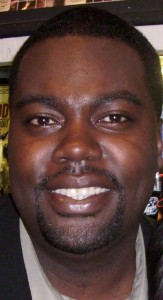Opinion
We want your voices, too. Share your views about what’s happening in Austin.
When I stand at a bus stop in the Austin area of Chicago’s West Side, staring at a 6-foot-tall beer advertisement, my soul stirs.
When I hear Mayor Daley express his sentiments over 22 shootings and seven killings in 12 hours but then talk about how teachers are being laid off, I cringe.
Or when the murder rate in Chicago is up 16 percent since the same time last year, I want to cry.
These pictures relay a hopelessness that incapacitates the desire to reach beyond the imaginary confines of the ghetto.
The images seen in impoverished communities perpetuate the cycle of poverty.
Where are the images of W.E.B. Dubois, Langston Hughes, Audre Lorde, Cornel West, Michael Eric Dyson, Ralph Ellison, Haki Madhubuti, Toni Morrison, Richard Wright and countless others whose intellectual capacities raised the awareness of the suffering human condition?

John W. Fountain III
It is easy to pontificate about the negative behavior rampant in the inner cities. The posed solutions remain buried under the billion-dollar industries of mass media. The use of African-American made jingles to bolster consumerism and advocate instant gratification trumps work ethics of earlier freedom pioneers.
If you wish to adjust the mentality of young black men and women in the ghettos of America, you must first embed subliminal messages of hope, education, freedom and a sense of involvement within the democratic process from the aldermen to the White House.
Education must be the very blueprint to success, not just any education. But one that highlights the valleys and mountaintops of the global African influence. They should also understand the unique position and history of African Americans.
But they must initially identify with scholarly geniuses of whose hues in skin tone echo their own ongoing struggle for equality. This resistance is not unique to the current generation, but the media has done a pretty good job of isolating them from their elders. Before they know how to read, children must see the conceivable change.
“The urgent problem of black poverty is primarily due to the distribution of wealth, power, and income — a distribution influenced by the racial caste system that denied opportunities to most ‘qualified’ black people until two decades ago,” writes Cornel West in his 1993 book Race Matters.
We have not arrived.
You want a solution?
Hire B-Boys to paint murals over every negative advertisement in the hood. Bring back Teen Summit and YSB Magazine. I want Lil Wayne, T.I., Nicki Minaj, Diddy and Jay-Z to start a book of the month club.
I want the mentor-to-mentee relationships to compensate for the increase in student-to-teacher ratio. I want the police on foot patrol again.
But what I most desire is for the community to bring back the community. I want to see beautiful black girls smile at the sunshine, I want to see black boys high five over SAT scores. I want to see different university banners hanging from the porches of proud parents. I want the self-images of these said people to once again bask in the glory of a proud past.
Read John Fountain’s other commentaries:
A town hall in need of a sequel
Redemption between a son and a mother
A cry for troops or just crying wolf?
Not everyone looks forward to summer
austintalks.org@gmail.com

I agree with the need for positive visual and audio re-enforcement. However, people must open their eyes, ears and minds to receive the positive re-enforcement. I’ve met numerous people within the Austin Community that didn’t realize how well they were doing until we discussed their lives as examples. Often times, after a short Q&A session, most of the individuals I spoke with take another look at the same problems and come up with different answers and solutions.
The need for a new vision is great. The need for individuals that can guide the misguided is equally great. The need for socially and scholastically educated citizens is great. The need for common etiquette is great.
“The harvest is great, but the laborers are few.” To change the vision of a single person is one of the hardest things that anyone can attempt to accomplish. You MUST spend one-on-one time with individuals to help.
To change the vision of a crowd, temporarily, just yell fire! Try yelling fire again tomorrow and nobody moves. What changed overall . . . nothing. “To improve something, you must change it. To change something, doesn’t mean it improves.”